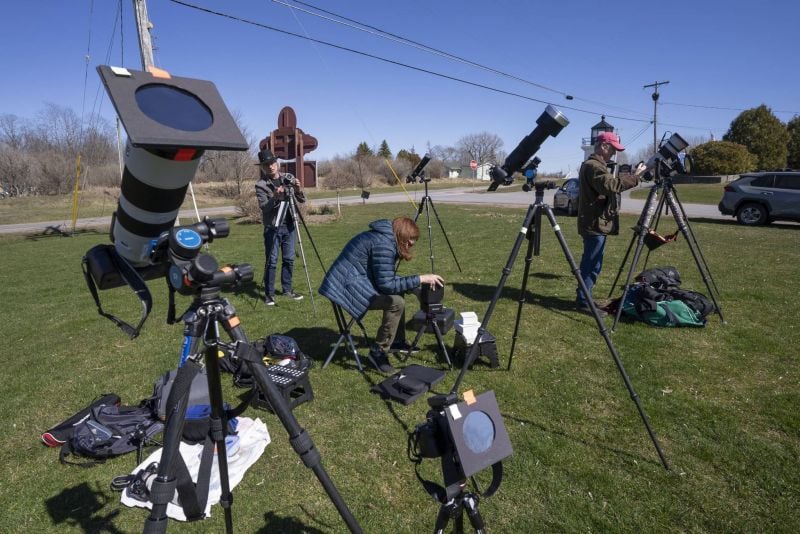
Keith Prue, Marcy Cohen and John Bills test their camera equipment on the eve of a total solar eclipse in North America, in Cape Vincent, New York, on Apr. 7, 2024. (Credit: Stan Honda / AFP)
A total eclipse — when the moon completely blocks the sun from the Earth, causing the sky to go dark — will be visible on Monday to millions of people in North America, including the United States, Mexico and Canada.
According to the National Weather Service of the US, globally speaking, the last total eclipse happened in 2021 and could only be seen from Antarctica. However, the last total eclipse experienced in North America took place in 2017.
What is the exact path of the eclipse?
Monday's total solar eclipse will begin over the South Pacific Ocean and move to Mexico's Pacific coast at around 11:07 a.m. Pacific Daylight Time (9 p.m. in Beirut).
After that, the eclipse will move from Mexico to Texas in the US and then to 12 other US states including Oklahoma, Arkansas, Missouri, Illinois, Kentucky, Indiana, Ohio, Pennsylvania, New York, Vermont, New Hampshire and Maine. Small parts of Tennessee and Michigan will also experience the event.
Finally, the eclipse will enter southern Ontario, and sweep across Quebec, New Brunswick, Prince Edward Island, and Cape Breton.
The eclipse will leave North America on the Atlantic coast of Newfoundland, Canada, at 5:16 p.m. NDT (Newfoundland Time).
If you don't live in these areas, you can watch, from anywhere in the world, this exceptional phenomenon on a website dedicated to the event, run by NASA.
The total eclipse will last around three to four minutes while the partial eclipse will last more than two hours.
Is it safe to watch the eclipse?
According to NASA, "it is not safe to look directly at the sun without specialized eye protection for solar viewing," except during the brief total phase of the eclipse.
Moreover, seeing the sun through a camera lens of a telescope "without a special-purpose solar filter" leads to a "severe eye injury."
People need to use "safe solar viewing glasses," which are also called eclipse glasses, "or a safe handheld solar viewer" to watch the partial phases of the solar eclipse directly with their eyes. However, they can not wear those if they plan to use a camera lens, telescope or binoculars which require different types of solar filters.
Those who do not have eclipse glasses or a handheld solar viewer can use an indirect viewing method, which consists of using a "pinhole projector ... that projects an image of the sun onto a nearby surface." However, people who plan to use this method should be wary not to look at the sun through the pinhole.